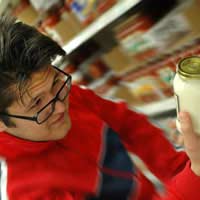Antioxidants and Their Role

One group of E numbers commonly found in food and drinks are called antioxidants. But what exactly are they and what is their role?
Antioxidants work in a similar way to preservatives as they help extend the shelf life and use by date of food, as well as improve their taste and look. When the fats, oils and vitamins in certain foods combine with oxygen in the air they naturally become rancid, produce unpleasant smells, taste horrible and go off. The antioxidants are included as essential ingredients to help prevent this happening.
Antioxidants also help prevent what’s called enzyme browning, which can cause fruits, vegetables and fruit juices to become discoloured. Although they won’t fully prevent enzyme browning from occurring for good, they do significantly reduce and slow down this process.
This chemical process of food becoming rancid is called oxidation and it’s mostly caused by exposure to oxygen (air), heat or light. During the food production process, antioxidants are mixed up well with fat or oil, and this helps delay the onset of oxidation.
Antioxidants can be categorised into two main types – they can be naturally occurring or manmade.
Naturally Occurring Antioxidants
Naturally occurring E number antioxidants include vitamin C, which is otherwise known as ascorbic acid, and is found listed on labels as E300. Vitamin C is used to protect and extend the life of products such as soft drinks, condensed milk and jams.Antioxidants called tocopherols are members of the vitamin E family and are categorised as E306 – E309. The tocopherols are found naturally in products such as nuts, soya, sunflower seeds and maize and they’re used in products to help preserve them. They’re most commonly found in products such as vegetable oils, cocoa and margarine.
As naturally occurring antioxidants are an essential element of food production, they’re in huge demand. To help cope with the demand, they have also been artificially created too. This is what’s called nature identical substances. They are identical in structure to the original substances, as their molecular structure has been copied, and are used in the same way.
Manmade Antioxidants
Antioxidants can be completely manmade too. One type of manmade antioxidants are the gallates, which form E310 – E312. The gallates are used more frequently in vegetable oils and margarines and help preserve the taste of the products and help stop them from going rancid. The gallates sometimes appear on labels as propyl gallate (E310), octyl gallate (E311) and dodecyl gallate (E312).Two other manmade antioxidants that are similar to the gallates are what’s known as BHT and BHA. In their long form BHT stands for butylated hydroxytoluene (E321) and BHA stands for butylated hydroxyanisole (E320).
Antioxidant Reference Guide
As a useful reference guide, here is a list of some antioxidants that occur frequently in foods and drinks.- E300 – ascorbic acid
- E301 – sodium L-ascorbate
- E302 – calcium L-ascorbate
- E304 – 6-0-palmitoyl-L-ascorbic acid
- E306 – tocopherols
- E307 – synthetic alpha-tocopherol
- E308 – synthetic gamma-tocopherol
- E309 – synthetic deltat-tocopherol
- E310 – propyl gallate
- E311 – octyl gallate
- E312 – dodecyl gallate
- E322 – lecithins
- E325 – sodium lactate
- E326 – potassium lactate
- E327 – calcium lactate
- E330 – citric acid


Re: Dangers and Side Effects of E Numbers
Is this the tip of the iceberg? Can't help thinking we all being slowly poisoned by convenience food. Convenient for…
Re: E200 - E299 Preservatives
Hallo I need advise on what preservetives and ant foaming agents to use for lemon juice. Also reconmondations on how much powders to…
Re: Top E Numbers to Avoid
Since Brexit, I have been adding a few extra E numbers in my products and my sales have boomed! I now sell the tastiest burger in town. E…
Re: E Numbers Not Suitable for a Halal Diet
Is E202 is halal?
Re: Does E631 Use Extracted Pig's Fat or Sardine Oil?
400
Re: E Numbers Not Suitable for a Halal Diet
E140 is a plant product, not derived from meat at all. Please check your facts.
Re: Top E Numbers to Avoid
I was prescribed amitriptyline for anxiety and got on well with the first box of tablets. After starting the second box I began to feel…
Re: E400 - E499 Thickeners, Stabilisers and Emulsifiers
All thickener agent name All emulsifier agents name Cemical use Food use
Re: Top E Numbers to Avoid
You say that E133 is banned in Germany, yet my GP has prescribed Fultium-D/Colecalciferol 800 out capsules with E133 and the Manufacturer…
Re: Does E631 Use Extracted Pig's Fat or Sardine Oil?
In India, there is a law already existing, that any food products having any non-vegetarian ingredients…